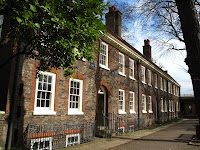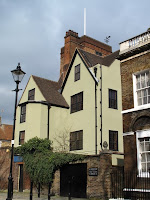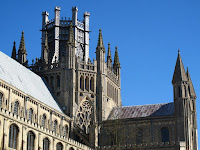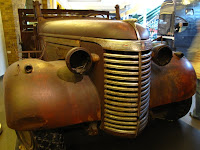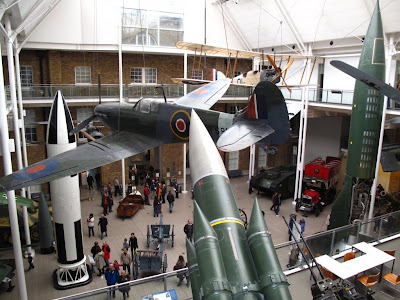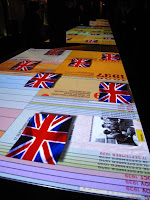 Today was UK's version of Mother's Day, and we spent in in a very odd place. London Underground had an open day in their Acton Depot. Along with actual historical trains, trams and busses, there were models of vehicles, and layouts of underground stations, and model train enthusiasts were there with their layouts and models of British transport.
Today was UK's version of Mother's Day, and we spent in in a very odd place. London Underground had an open day in their Acton Depot. Along with actual historical trains, trams and busses, there were models of vehicles, and layouts of underground stations, and model train enthusiasts were there with their layouts and models of British transport. We were taken for a ride in the now historic prototype Routemaster bus RM1, but probably the most interesting event was a tour behind the scenes into the poster archives. The Museum owns a copy of each poster from 1908 to the present. It is a marvellous reflection of the different styles of art down through the decades.
We were taken for a ride in the now historic prototype Routemaster bus RM1, but probably the most interesting event was a tour behind the scenes into the poster archives. The Museum owns a copy of each poster from 1908 to the present. It is a marvellous reflection of the different styles of art down through the decades. We were also shown into the room holding the collection of originals for a surprisingly small proportion of the posters produced. The early lithographic method of printing called for great artistic skill by the printer, as each poster was redrawn on up to five full size stones, one for each paint colour. We will now look with greater appreciation at posters we see in future.
We were also shown into the room holding the collection of originals for a surprisingly small proportion of the posters produced. The early lithographic method of printing called for great artistic skill by the printer, as each poster was redrawn on up to five full size stones, one for each paint colour. We will now look with greater appreciation at posters we see in future.
It seems that the London Underground bosses were much more careful to preserve the posters than the originals from the artists who painted them, they were hung around the offices them sold off or just disappeared home with the occupants of the office when they retired.
 An interesting fact and link to yesterday was that the Arsenal Station is the only one named after a football club and since the club has shifted its home ground to the new stadium is no longer the closest station to the club grounds.
An interesting fact and link to yesterday was that the Arsenal Station is the only one named after a football club and since the club has shifted its home ground to the new stadium is no longer the closest station to the club grounds.
